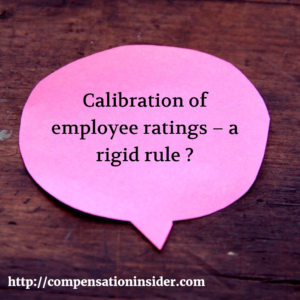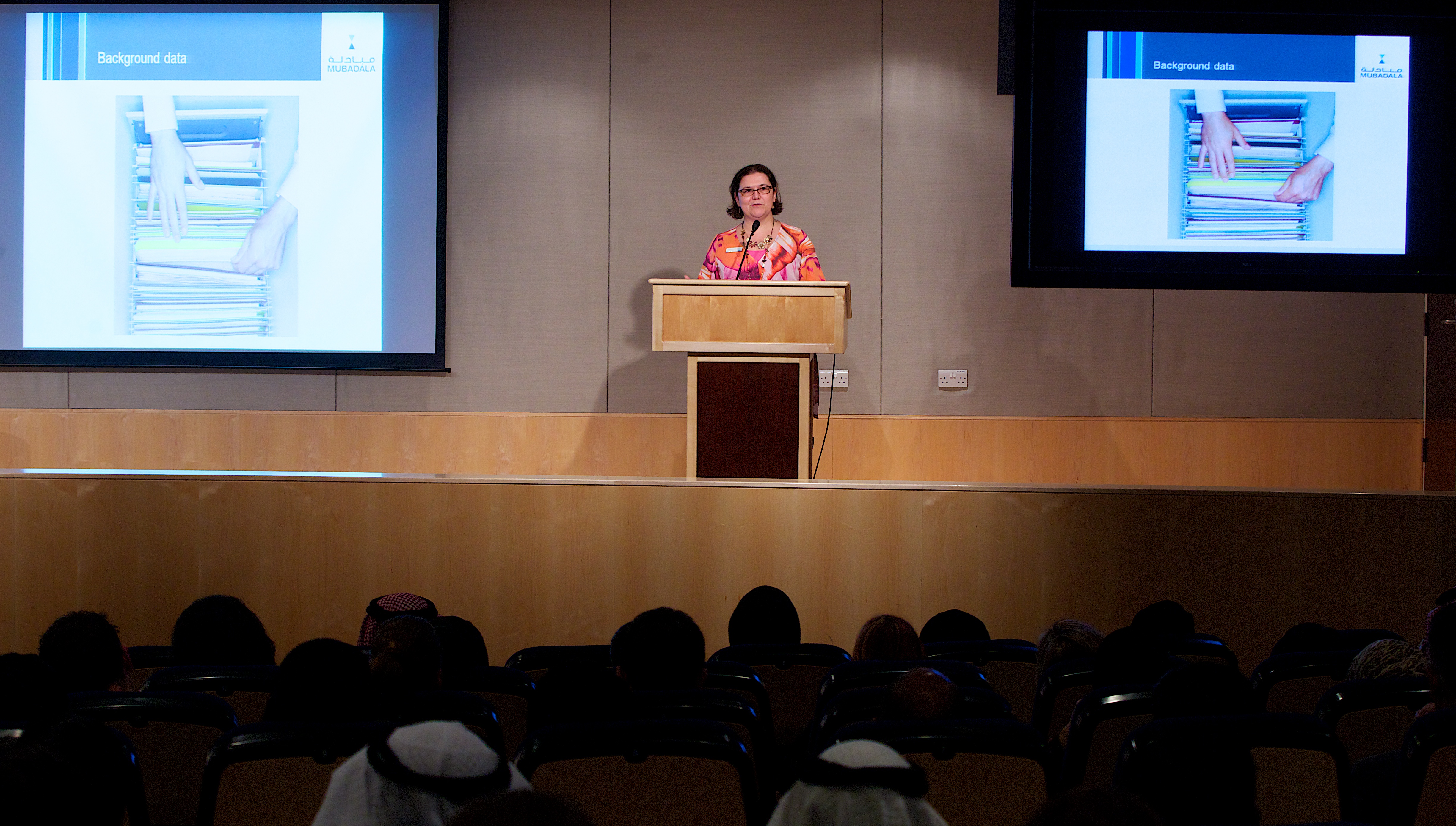Year-end is approaching fast, and with it comes the time for performance appraisals, which my friend Clare and I were discussing a few days ago.
Clare was recently appointed as HR Business Partner and this year will be her first time to support multiple Business Units through the year-end appraisals process.
Our discussion focused mostly on calibration. You may call this “moderation” in your organisation. Basically, this is when the senior management of the Business Unit gathers and discusses the provisional performance ratings of all employees in the Unit. Upon agreement, the managers may moderate up or down the provisional rating of some employees. The calibration is based on a common understanding of performance level descriptions, as well as adherence to the “distributed curve” which prescribes the percentage of employee population that the company deems should be rated as good, excellent or poor performers.
Now, how your company approaches calibration can make a big difference to the quality of the end-result. There will always be some Units that are too small for the guided / forced distribution to be applied. Best practices recommend to have a minimum of 50 employees for calibration to be meaningful. So what do you do when your Unit has only 30 employees but the year-end performace appraisal process requires you to adhere to the distribution curve ?
If your Unit leadership is doing their managerial work properly, throughout the year, they will have addressed performance issues. So, employees with performance problems have been identified. Their managers have sat with them, explained their expectations, and agreed a plan to reach improvement. Either the plan worked, and there is no more performance issue, or it didn’t, in which case the employee shouldn’t be part of the company any longer, so there is no more performance issue. At the end of the year therefore, how does the Unit adhere to the guided distribution curve in terms of getting their prescribed percentage of under-performing employees ?
In both cases, I say, use your judgment and common sense. During the session, focus your discussions on the employees with a high or low provisional rating, and agree whether to keep them there or calibrate them up or down. Try to adhere to the curve as much as possible, but don’t become a slave to it.
The calibration process and guided distribution curve are not “tools for HR or Compensation & Benefits” that must blindly be followed.
Remember what purpose they were implemented for. The objective is to make sure that :
- There is common understanding, across the organisation, of what above and below standard performance is, and every manager adheres to the same standards. This ensures consistency of how employees are evaluated throughout your company. No more “my manager is very strict , her manager is very lenient” complaints from employees.
- Some serious thought has been put in identifying your true top performers. After all, calibration means that absolute performance is evaluated and agreed, but also ranking amongst peers has been taken into account. Even among the best, some are performing better than others.
- Some serious thought has been put in identifying your bottom performers. No-one likes to have the “tough conversation” with an employee who is not engaged and performing, is in the wrong job, or has been promoted above their competency level. Sometimes the employee tries and works hard, but does not produce the expected results (in which case in my opinion, it’s mostly the manager’s fault for not setting the expectations properly, and providing the support, guidance and coaching required). Managers who don’t tackle this performance situation actually create a bad atmosphere in their team because the other employees, hard working and committed and performing, will resent the “slacker” among them. So, if the issue was not addressed throughout the year, at least during the calibration meeting, the manager will hear from his peers about his “problem employee” and will have to communicate the adequate performance rating and have a discussion with his/her team member.
The calibration and guided performance curve are tools to allow HR ensure that these topics are discussed properly in the company, and as a result, a culture of performance, specific to your company, is created and promoted in your organisation.
So don’t become fixated on the final number. If needed and justified, allow some reasonable deviation from your model, and rest content that your company has actually made progress toward establishing a common understanding of its performance expectations. Ultimately, this is what drives financial performance in your organisation, and this is what the processes that your Compensation & Benefits designed are meant for.
Please share your views in the comments section. Is there a calibration process in place at your organisation ? What kind of rules do you apply for managing situations in small teams and in those where the poor performers were dealt with throughout the year ?




Once an employee is selected for a job, it is assumed that he/she is a good fit having been tested for knowledge (education and experience) as well as basic team/soft skills by the recruitment team. As soon as the initial honeymoon period is over, it is the responsibility of good leaders to suppress disenchantment amongst the new hires, that could result from inconsistent work loads for similar level, (subtle) discrimination or lack of feedback. Often, performance related issues arise mainly due to work culture/environment and the inadequate communication that is enhanced by a multitude of workforce cultures in the Middle East.
Whilst calibration may be a standard technique to identify outliers, the common standards whilst may be well defined are often subjectively interpreted for numerous reasons. The real reason for the “weak” performers is hardly analyzed and meaningful insights never come to the fore.
I agree Sam, the root causes of poor performance are rarely analysed and addressed properly. The reasons may vary and include a recruiting error (after all, when we hire, we only assume that the candidate will be a good fit – it is not demonstrated on the job yet), a cultural misfit, a change in working conditions (workload…) and requirements (new technology, reorganisationfrom back-end job to front-end activities…), pure lack of engagement / laziness from the employee, a negative workplace (bullying, harassment…), a personal and hopefully temporary situation in private life, being promoted over their capability level, a negative relationship with the manager…. A good deal of that can be addressed through proper management and leadership, training and coaching, and regular monitoring.
The process of calibration is to ensure that all managers agree on who are the people who need more support and attention, that there is no team being evaluated more strictly or loosely than another, that no-one is victim of discrimination from their manager. Through calibration, identification takes place – getting to the causes may also be discussed during the moderation session, but it is not the main purpose of the process.
It is thereafter the role of the manager and employee to jointly decide on a path for improvement, with clear outcomes and consequences for reaching them or not. Sometimes the solution is simply to transfer the person, others to train them formally, yet others to give them more clarity of what is expected of them and regular feedback… and sometimes we have to admit that despite our best efforts, “things are not working” and it is better to part ways.
Just to avoid difficult discussions with poor performers (and be accused of having favoritism if they give above average or excellent ratings), some line managers will rather give all their staff an average rating (rater’s bias), but this same manager will give a self- rating of above average. I do not see logic in it.
Unfortunately, more than implemention efforts of calibration sessions and application of bell curve, changing mindset/culture is difficult. I understand that as you mentioned above, these tools shouldn’t be blindly followed and common sense have to be used for flexibility, but it becomes even more difficult when line managers do not entertain these ideas (callibration session and normal distribution curve) and think of it just for budgeting merit increase (i.e. give all of them an average rating, increment budget distribution, done and dusted.)
Yes Marie you are right. the cultural change is the most difficult part. It requires time, lots of education for line managers, executives and employees, and also for HR to put in place the right support tools and processes (for example, reporting on progress, tools for line HR to use with managers etc). I think finding who the champions of differentiation are is very important : find these managers who are fair instead of “sprinkling”, and use them as role models and to help spread the word among their peers. Maybe even give them special recognition from Top Management, so that all managers can see that the organisation *really* values a balanced approach to ratings and rewards. In time, good practice will spread – but it’s important to manage the expectations from Executives right from the beginning so that they don’t expect change to happen in only one cycle.